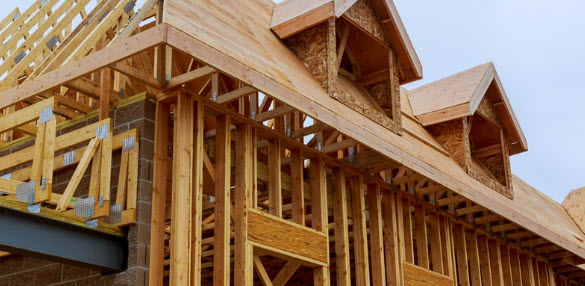Thinking about refinancing your home loan? It can be a really smart move to improve your financial situation – but only if you go in with clear goals and solid information. Whether you’re hoping to shrink your monthly payments, snag a lower interest rate, ditch private mortgage insurance (PMI), or even access some of your home’s equity, this guide will walk you through everything you need to know about home refinancing.
At Home Loan Advisor, we’re all about connecting you with home loan solutions that fit your unique needs. In this guide, we’ll break down the refinancing process step by step, share real-life examples, look at the latest market data, and answer your frequently asked questions. Our goal is to help you feel confident and make informed decisions about your home financing.
What Exactly Is Home Refinancing?
Simply put, home refinancing means replacing your current mortgage with a brand new one – often with better terms. You’ll apply for the new loan, use it to pay off your existing mortgage, and then start making payments on the new loan. Homeowners choose to refinance for lots of reasons, including:
- Lowering your interest rate: This can significantly reduce your monthly payments and overall interest paid.
- Reducing monthly mortgage payments: Even a small rate drop or a longer loan term can make a difference.
- Switching loan types: For example, moving from an adjustable-rate mortgage (ARM) to a more stable fixed-rate loan.
- Tapping into your home equity: Accessing cash for major expenses like renovations or debt consolidation.
- Eliminating private mortgage insurance (PMI): Once you have enough equity, you can often get rid of this extra monthly cost.
- Changing the loan term: Perhaps you want to pay off your home faster with a shorter loan term (like going from 30 to 15 years).
Is Now the Right Time to Refinance Your Home?
Timing is crucial when it comes to refinancing. Here are four key things to consider before taking the plunge:
- Where Are Interest Rates Now? Refinancing usually makes sense when current interest rates are at least 1% lower than what you’re currently paying. For instance, in March 2025, the average 30-year fixed mortgage rate dipped to 6.65% – a decrease from earlier highs. This kind of drop can create good opportunities for homeowners to save.
- How Much Equity Do You Have? Most lenders prefer you to have at least 20% equity in your home to qualify for a refinance without needing to pay PMI. If your home’s value has increased over time, you might have reached this point.
- What’s Your Credit Score Looking Like? A better credit score typically means you’ll qualify for a lower interest rate. Ideally, aim for a score of 680 or higher for a conventional refinance. If your score is a bit lower, government-backed loans like FHA might be an option, sometimes allowing scores as low as 580.
- What’s Your Debt-to-Income Ratio (DTI)? Lenders will look at your DTI (how much of your monthly income goes towards debt payments) to make sure you can comfortably handle the new mortgage. A lower DTI (generally under 43%) increases your chances of getting approved and securing better interest rates.
Your Step-by-Step Guide to Home Refinancing
Follow these steps to set yourself up for a smooth and successful refinance:
Step 1: Figure Out Your Goals Start by getting clear on what you want to achieve. Are you primarily focused on lowering your monthly payment, shortening your loan term, or getting cash out for a specific project? Knowing your goal will help you choose the right type of refinance.
Step 2: Take a Look at Your Finances Review your credit report for any errors, calculate your current DTI, and estimate how much equity you have in your home. These factors will give you a good idea of your eligibility and the kind of offers you can expect from lenders.
Step 3: Shop Around and Compare Lenders Don’t just go with the first offer you receive. Reach out to several different lenders to compare their interest rates, closing costs, and loan features. Applying with multiple lenders within a short timeframe (around two weeks) usually won’t significantly impact your credit score.
Step 4: Get Your Home Appraised In most refinance situations, the lender will require a professional appraisal to determine the current market value of your home. This valuation will influence how much equity you can borrow against and whether you’ll need to pay PMI.
Step 5: Lock in Your Interest Rate Once you’ve found an offer you’re happy with, lock in your interest rate. This protects you from potential market fluctuations while your loan is being processed.
Step 6: Close on Your New Loan Carefully review all the closing documents before you sign. At this stage, you’ll typically pay closing costs, which can range from 2% to 5% of the total loan amount.
Understanding Different Types of Mortgage Refinancing
There are various refinance options available, each designed to meet different needs:
- Rate-and-Term Refinance: This type focuses on changing your interest rate, your loan term, or both, without accessing any of your home’s equity.
- Cash-Out Refinance: This allows you to borrow more than your current mortgage balance and receive the difference in cash. This can be used for things like home improvements or consolidating other debts.
- Cash-In Refinance: In this scenario, you bring cash to the closing table to reduce your existing loan balance. This can help you qualify for better terms or eliminate PMI.
- FHA/VA Streamline Refinance: For homeowners with existing FHA or VA loans, these simplified refinance options often have less stringent requirements, sometimes skipping the appraisal and income verification steps.
Real-Life Refinance Success Story
Case Study: John & Maria
- Original Loan: 30-year fixed at 5.25%, taken out in 2017
- New Rate: 6.25% in 2025
- Equity: 25%
- Goal: Eliminate Private Mortgage Insurance (PMI) and lower their monthly housing costs.
By refinancing with a new lender, John and Maria successfully reduced their monthly mortgage payment by $180 and eliminated their PMI. Even after paying $3,500 in closing costs, their monthly savings allowed them to recoup these costs in less than 20 months.
What Are the Costs Associated with Refinancing?
While refinancing can lead to significant long-term savings, it’s important to be aware of the upfront costs involved, which can include:
- Loan origination fees (charged by the lender for processing the loan)
- Appraisal fees (for assessing the value of your home)
- Credit report fees (to check your credit history)
- Title insurance and search fees (to ensure clear ownership of the property)
- Other closing costs (these can vary but typically fall between 2% and 5% of the total loan amount)
Quick Tip: Calculating Your Break-Even Point
Use a refinance calculator to figure out how long it will take for your monthly savings to cover your closing costs. For example, if you save $150 per month and your closing costs are $3,000, your break-even point is $3,000 / $150 = 20 months.
Understanding Today’s Mortgage Market Trends
- Refinance Volume is Up: Over 642,000 refinance loans were closed in the fourth quarter of 2024, showing a 6.4% increase despite some interest rate fluctuations.
- Cash-Out Refis Are Popular: Homeowners accessed a significant $21 billion in home equity through cash-out refinances in the fourth quarter of 2024, marking the highest level in the past two years.
- Approval Rates Are Solid: On average, around 73% of refinance applications are being approved. Denials often stem from high levels of debt, lower credit scores, or insufficient home equity, highlighting the importance of being prepared.
Your Home Refinancing Questions Answered (FAQs)
Q: What is refinancing, and why might I consider it?
A: Refinancing means replacing your current mortgage with a new one, often with the goal of securing a lower interest rate, changing your loan term, or accessing your home’s equity.
Q: How much equity do I typically need to refinance?
A: While the standard is often around 20% to avoid PMI, some government-backed programs like FHA may allow as little as 3.5%, and VA loans can sometimes go as low as 0%.
Q: Can I still refinance if I have less-than-perfect credit?
A: Yes, it’s possible, but you might face higher interest rates. FHA and VA streamline refinance options can be more flexible for borrowers with lower credit scores.
Q: How long does the refinancing process usually take?
A: The process typically takes between 30 and 45 days, depending on how quickly your lender works and how promptly you can provide the necessary documentation.
Q: Are there refinancing options that don’t involve paying closing costs upfront?
A: Some lenders offer “no-closing-cost” refinance options. However, keep in mind that these often come with a slightly higher interest rate over the life of the loan. It’s not truly “free” – the costs are just structured differently.
Final Thoughts
Refinancing your mortgage can be a powerful tool for achieving your financial goals. However, it’s crucial to approach the process with a clear plan, realistic expectations, and by carefully comparing your options. Whether you’re looking to reduce your monthly payments, pay off your mortgage faster, or access cash for important needs, having reliable home refinancing guidance is the first step towards making the right decision.
At Home Loan Advisor, we’re dedicated to helping you navigate the complexities of refinancing. Explore our resources, connect with our experienced specialists, or compare personalized loan offers – all in one convenient place.



